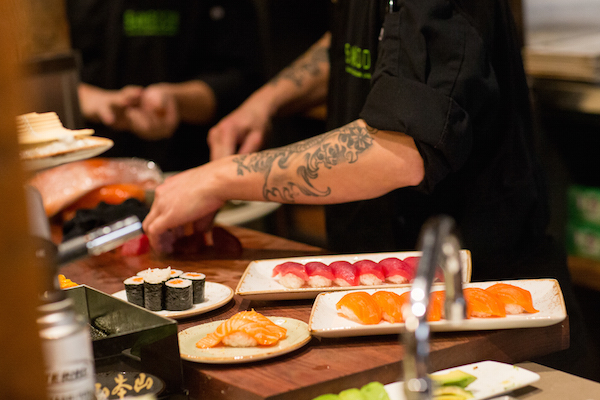written by Thor Erickson | feature photo by Heidi Weiss Hoffman
Throughout my early childhood, my parents owned a bakery. My father would wake me and my sister at 3:30 a.m. so we could go with him to work, where we slept on sacks of flour until it was time for us to go to school.

Lunch at school was always challenging. Other kids brought lunches in bright tin boxes depicting cartoon characters or comic book heroes. These boxes held colorful geometric shapes–square crackers with perfectly shaped cheese slices and round cookies with pink and yellow frosting.
The sandwiches confused me the most. They were perfectly square. The bread was white, and usually had no crust. The soft, pillow-like squares were consumed with little to no effort. My lunches were different, and it was embarrassing.
I brought my lunch in a used bread bag. The crackers were what my dad called “flatbread,” and the cheese was some stinky Norwegian brown stuff. The cookies were broken day-olds.
My “sandwiches” took many different forms. Sometimes they were actually on bread, however, the bread was a crusty whole wheat, stuffed with roasted eggplant or caramelized onions or peppers. Other times, they were not sandwiches at all, but little savory hand-pies made with leftover piecrust and some sort of filling, usually the ends of the roast beef that were used for real sandwiches at the bakery.
I often ate alone by my own choice, avoiding the harsh critique of the other children and secretly enjoying my lunches. One day, a nice girl named Vicki gave me half of her sandwich. I offered half of mine in trade, but she declined.
The white bread with no crust was a gummy mush. The filling (a PB&J, I think), had soaked into the bread, making it unrecognizable. The flavor was awful.
I asked my dad why that bread tasted so bad. “Because it was made by a machine with low quality wheat, and a bunch of other crap,” he said. “Your sandwiches are made by hand with great ingredients and love. Wheat is the staff of life!” he shouted as he dropped me off at school.
Traditional Baguette
3 3/4 cups organic bread flour
1 1/2 cups water
1 1/2 teaspoons sea salt
1/2 teaspoon active dry yeast
Place warm water (approximately 80 degrees F) in the bowl of an electric mixer fitted with a dough hook. Dissolve the yeast in the water, and let it sit 10 minutes until bubbly. Add the flour and salt. At speed 3 or 4 on a 10-speed mixer, mix for 4 . minutes. Stop the mixer to scrape dough from the sides if necessary. The dough should have a loose texture.
Ferment at room temperature for three hours, and during the first hour, fold the dough three times: at 20, 40 and 60 minutes. Do this by turning the mixer on for a few seconds during each 20-minute interval. Alternatively, turn the dough onto a floured counter, pick it up by one hand, let it stretch, and fold it over onto itself.
Divide the dough into two equal pieces (12 to 14 ounces each). Shape into 8- to 10-inch cylinders. Let it rest for 15 minutes.
Put both hands at the center of the cylinder of dough. Gently roll hands back and forth while moving hands away from each other lengthwise along the dough to shape each piece into a 15-inch baguette.
Cover with a clean linen to prevent crust formation.
Final Fermentation: Allow baguettes to rest 1 hour at room temperature (about 75 degrees F).
Preheat oven to 460 degrees F. Using a razor or serrated knife, make about four slashes about .-inch deep down the center line of the dough. Bake on a hot stone, hearth or cookie sheet for 18 to 20 minutes to produce a crisp crust with a rich color.







